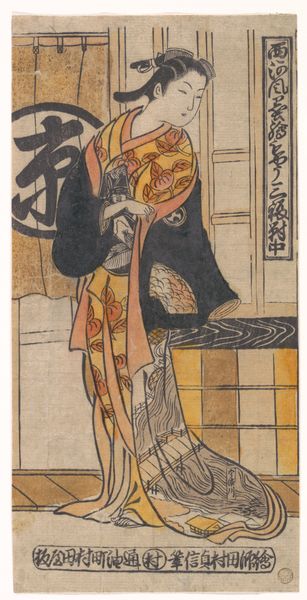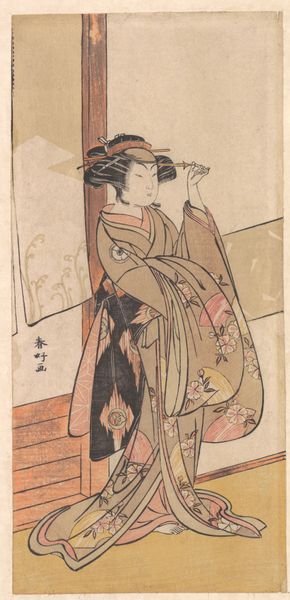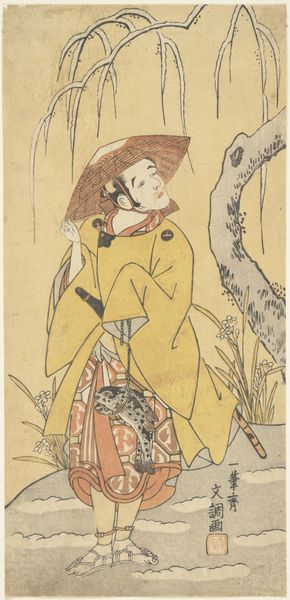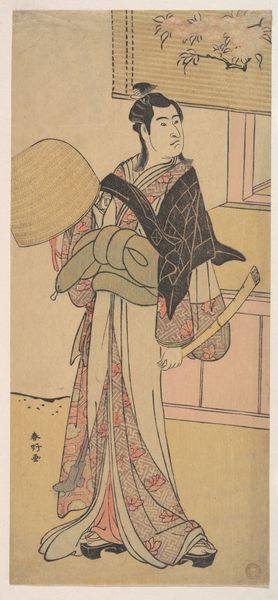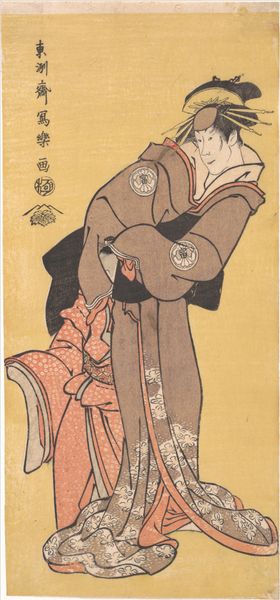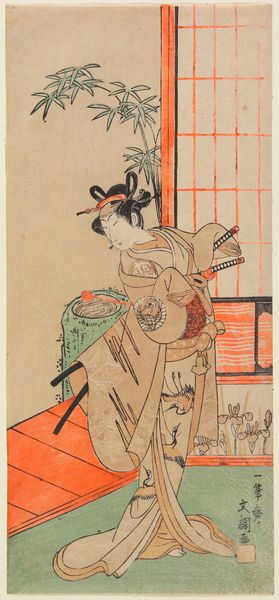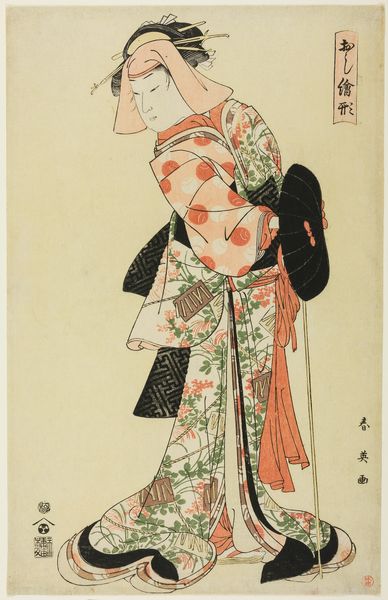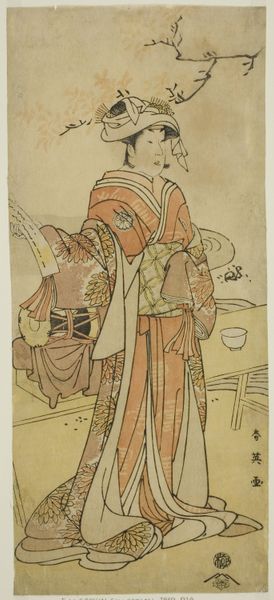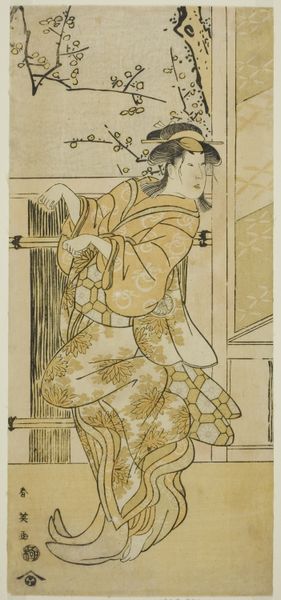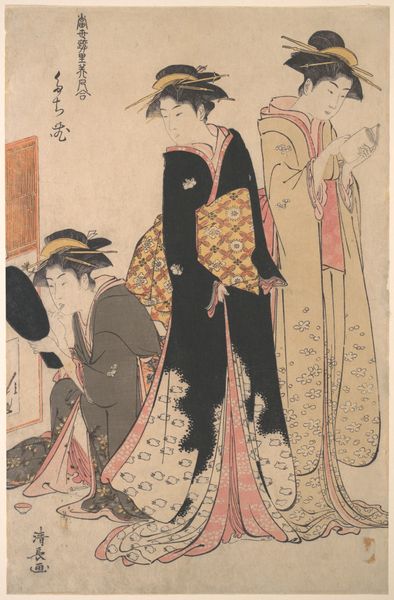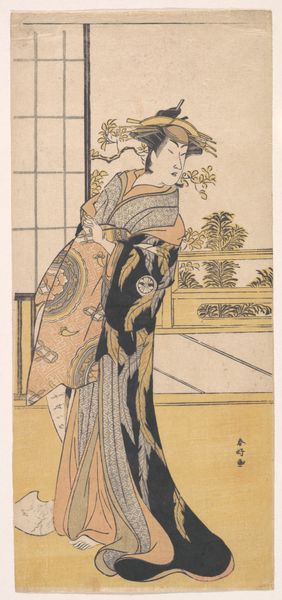
Two Chinese Scholars Practicing Calligraphy in Their Studio 1830 - 1850
0:00
0:00
# print
#
asian-art
#
ukiyo-e
#
orientalism
#
men
#
cartoon style
#
calligraphy
Dimensions: Image: 9 7/8 x 14 3/4 in. (25.1 x 37.5 cm)
Copyright: Public Domain
Curator: This print, titled "Two Chinese Scholars Practicing Calligraphy in Their Studio," was likely created sometime between 1830 and 1850 by an anonymous artist. Editor: It feels theatrical, almost like a stage set. The patterned robes, the carefully arranged objects, the lotus painting on the wall – everything seems placed to create a specific impression. Curator: Let’s consider the materiality of this print, since it provides clues about the society it came from. The work's existence as a print suggests that such images could be readily reproduced and disseminated. It speaks to the potential rise of a middle class who could consume such artworks. Editor: The lotus flower in the hanging scroll immediately caught my eye. In Chinese iconography, it's rich with symbolism - purity, enlightenment, rebirth. It creates a sense of contemplative aspiration in the space, doesn’t it? The scholars are quite literally surrounded by symbols of intellectual and spiritual achievement. Curator: Indeed, but observe the tension inherent in its production. A skilled artisan, likely working under specific constraints and labor conditions, was needed to meticulously carve the blocks for each color layer. Each detail then served to reproduce this image over and over. Who benefits from the reproduction of this image and its circulation? What material goods are exchanged for this art? These things matter. Editor: Agreed. But let’s also remember the long history of calligraphy as more than mere writing. It’s considered an art form in itself, a way of expressing one's inner character through the brushstrokes. To me, the scholars, immersed in this activity, are embodying a dedication to tradition. The act of calligraphy becomes a potent emblem of cultivated virtue and cultural continuity. Curator: Certainly. Yet the scene seems self-contained. Look at the interior and what objects are chosen to appear. How are we as viewers meant to understand the presentation of these "scholars"? The trappings of this form of "Orientalism" were of course exchanged, disseminated, and ultimately consumed as part of a circuit. Editor: Well, seeing these layered symbolic meanings enriches my appreciation. It speaks of a profound cultural investment in artistry, where intellectual work and aesthetics were interwoven. Curator: And I am reminded how even artistic expression is subject to the flows of materials, economies, and labor. Editor: It all certainly gives us something to consider.
Comments
No comments
Be the first to comment and join the conversation on the ultimate creative platform.
